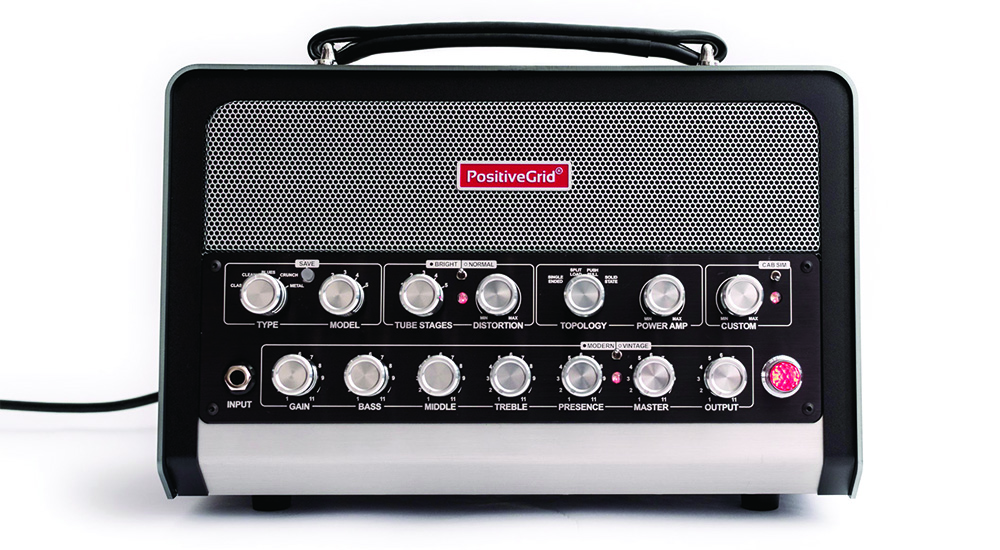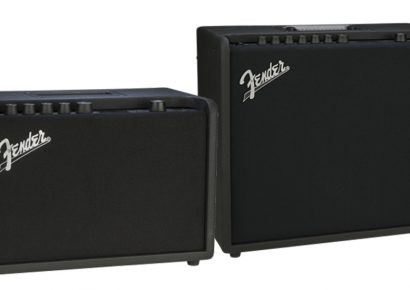Positive Grid are a company that has been at the coalface of this technological tin mine for years now. Famous for creating some of the most user friendly and sonically advanced music apps on the market, their new BIAS Head sees them take one almighty leap into the physical realm and apply the entirety of their tone-tech prowess in the real world.
The BIAS Head is, at its genesis, a modeling amp, just not like you’ve known before. As opposed to being an engorged menu of presets and optional extras, this unit seeks to put the power in your hands. You choose just about everything except the printed circuit board it is built on and the unit itself quietly ensures that a) you have easy access to all your choices and b) every last one of them sounds as natural as the real thing.
Despite being loaded with features, the unit itself is simple enough to navigate. The traditional controls are there along the bottom row; input gain, bass, mid, treble, presence and master volume can all be used to chip away at what it is you’re looking for. There’s an output volume for your neighbors’ sake and a vintage/modern switch that changes the era your tone mimics. Along the top row is where it gets interesting. Essentially you have five banks with five presets per bank, each loaded straight out of the factory to represent a broad sweep of desirable heavy hitters in the amplification hall of fame. Anything from Fender Blackface or JC120 clean to Marshall Plexi and 5150 high-gain are on offer straight out of the box and make for a great place to start. From there the tube stack selection, circuit design type and power-amp dials offer you a simplified version of the options you can tune in once you hit the digital realm, but more on that later.
The back panel is a studio or live engineer’s dream. The speaker out reads and matches impedance to just about any cabinet you can put it in front of. There are balanced and unbalanced XLR and TRS outs in stereo pairs for sending signal to various different destinations. Effects loop, headphone out and pre and post switch for the cabinet simulator mean that the person behind the faders has just as much control over what comes in as the person doing the shredding. Dual footswitch ports offer yet another hall of possibility and the whole unit is midi compatible via the in, out and thru five pin ports. Whether you’re just playing the thing live, recording it patched straight into a desk or using the machine to trigger lighting rig changes there is absolutely no limit to what you can do with this sleek, black and silver capsule.
Here’s where it gets really incredible. All of what I’ve written above is merely a conduit for the infinite, awe-inspiring possibility you get once you hook your BIAS Head up to your Mac, PC or tablet. The companion apps offer you not only the opportunity to render your tone from the library of options available, but you can also render an exact replica of your favourite rock box simply by using a recording into the interface to map it’s tonal fingerprint. It’s the kind of thing that there are X-Files episodes about – upload the consciousness of even the shitty, ancient practice amp that you’ve become accustomed to into the machine and the BIAS Head lets you take it anywhere. This means it will never die on you, never conk out at the crucial moment and always be there when you need it. Kinda spooky really, especially when you actually do it and see just how startlingly accurate it is.
One of the fatal flaws of even the front-runners of the digital modeling amp race is suspension of disbelief. All of the examples I’ve played so far are good but I’ve always been deathly aware that I am not playing the real thing but shredding inside a simulation. This is where Positive Grid has made a huge leap forward. Not once in the few hours that I played with this amp did I think to myself ‘yeah, but…’, and that’s all down to how much care has been given to make the amp feel like a real, humming and whirring machine in its own right.

